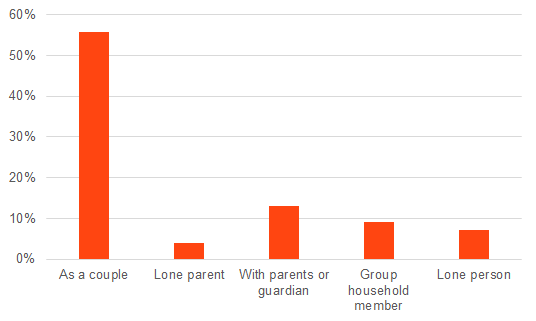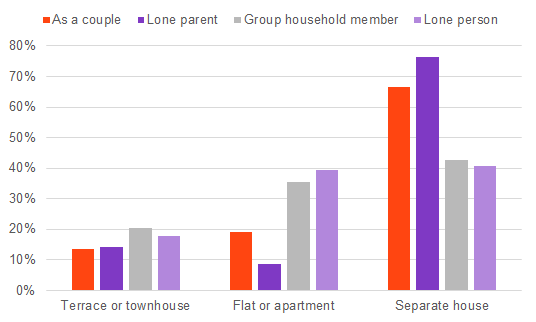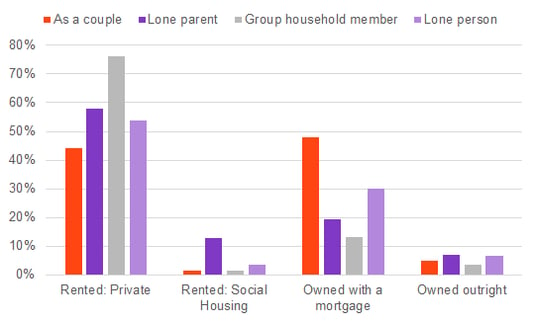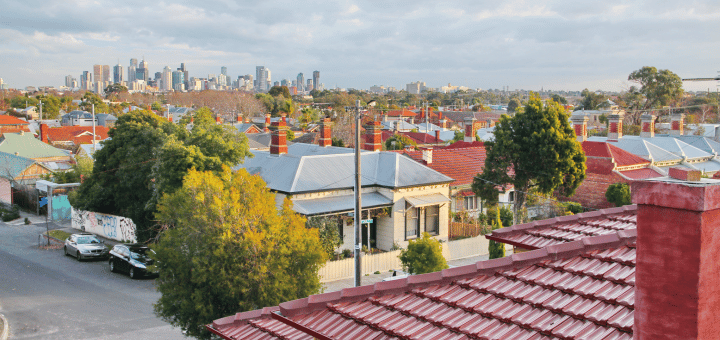This blog follows on from one Georgia wrote a few weeks ago, looking at how young adults would prefer to live and their housing aspirations. In this blog we keep the theme going, and have a look at the next older age group, those aged 25-34 years.
Interested in finding out more about how the young workforce in your area are currently living? Check out the services on offer from our housing team.
This group has traditionally covered the ages of establishing a career, coupling up and maybe starting a family, and purchasing a home. However, this age group is becoming less predictable, with many more taking on post graduate study, taking longer to establish careers and the median age at marriage and arrival of first child increasing.
So how are people aged 25-34 years in Australia living? By this age group, over half of all adults are living as a couple. Just 13% are still living with their parents or guardian. Somewhat surprisingly, very few live as group household members or lone persons.
Living arrangements of 25 to 34 year olds, Australia, 2016

Source: ABS Census of Population and Housing, 2016
What types of housing does the young workforce live in?
The type of housing 25-34 year olds live in is fairly dependent on the household type that they’re living in. Couples and lone parents are much more likely to be living in separate houses than those living alone or in groups households. These household types are more likely to be living in flats or apartments. A relatively small proportion of the 25-34 year old age group live in terrace or townhouses, but this is more a reflection of the small proportion of overall dwelling stock these dwelling types account for.
Housing consumption patterns of independent 25 to 34 year olds, Australia, 2016

Source: ABS Census of Population and Housing, 2016
Again, the tenure type of this age group differs by household type. Those living in a couple are much more likely to take on a mortgage, with the safety and earning capacity of two people. Some lone persons do take on a mortgage, but for all other household types, the majority are renters.
Housing consumption patterns of independent 25 to 34 year olds, Australia, 2016

Source: ABS Census of Population and Housing, 2016
Is this what they truly want to be living in?
The Australian Housing and Urban Research Institute recently undertook the Australian Housing Aspirations survey with the goal of answering this question. The survey found that for many 25-34 year olds, their short term housing aspirations were met by their current living arrangements. However, few felt that their current living arrangements would meet their longer term aspirations. By this age the vast majority of survey respondents had long term aspirations of home ownership, ideally of a 4 bedroom separate dwelling. The main difference within this age group is the level of optimism in meeting these aspirations. Almost 1 in 5 respondents felt there was little point in actively planning to meet this long term aspiration as it was felt that it was unattainable, for a variety of reasons. Those that felt more optimistic were generally living as a couple, and had university qualifications.
While these sorts of insights are unfortunately not available at an LGA level, Australia wide surveys do shed some light on the types of aspirations young people living in your area may have. You can always find out more about how young people in your area are currently living. Interested? Check out the services on offer from our housing team.












